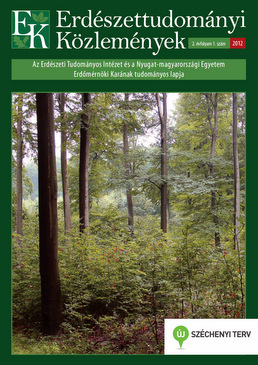Tree utilization systems in the XXI. Century
Katalin Mátyás Szakálosné, László Attila Horváth & Tamás Major
Correspondence
Correspondence: Szakálosné Mátyás Katalin
Postal address: H-9400 Sopron, Bajcsy-Zsilinszky u. 4.
e-mail: mkata[at]emk.nyme.hu
Abstract
The classification of domestic loggings into working systems was carried out first in the 1970s and four systems have been worked out by the end of the century (Fulltree System, Tree Length System, Shortwood System, chipping method). The dynamic technical and technological developments of the present days as well as changing demands of the market and of the society necessitate the re-thinking of the current classification system. By the present days besides the four traditional logging systems four new systems have been defined according to the latest requirements. The theoretical background of the establishment of this new categorisation was the fact that nowadays, due to the enhanced rate of mechanization, loggings can be categorized either into systems with debranching (tree-length system, long-length system, shortwood system) or into systems without debranching (production with cutting-up the whole branchy stem, bundling, chipping). Besides the re-categorisation and characterisation of logging subsystems we have also carried out their comparative evaluation using a subjective point system regarding ecological, economical and social aspects.
Keywords: tree utilization, tree harvesting working systems, production
Open Acces
For non-commercial purposes, let others distribute and copy the article, and include in a collective work, as long as they cite the author(s) and the journal, and provided they do not alter or modify the article.
Cite this article as:
Szakálosné, M. K., Horváth, A. L. & Major, T. (2012): Tree utilization systems in the XXI. Century. Bulletin of Forestry Science, 2(1): 135-149. (in Hungarian)
Volume 2, Issue 1
Pages: 135-149
First published:
3 September 2012
Related content
5
More articles
by this authors
2
Related content in the Bulletin of Forestry Science*
More articles by this authors in the Bulletin of Forestry Science
* Automatically generated recommendations based on the occurrence of keywords given by authors in the titles and abstracts of other articles. For more detailed search please use the manual search.
